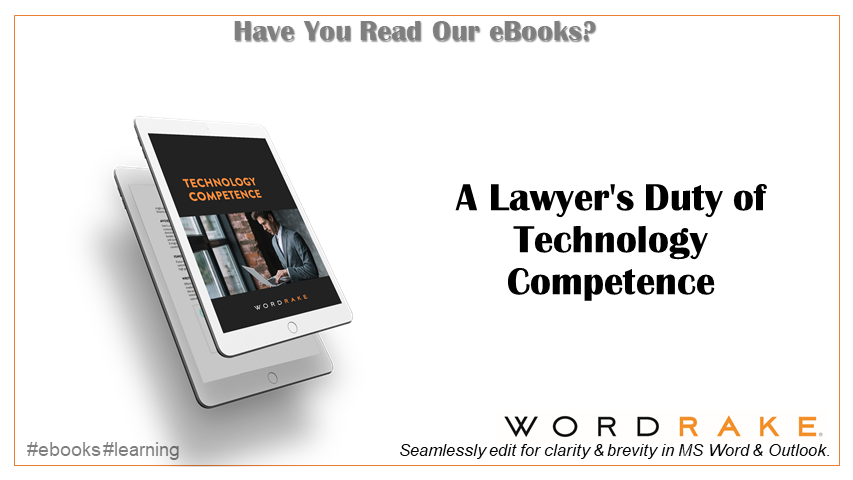Writing in plain language helps you communicate with your audience. If that’s not enough incentive to write clearly and organize information logically, then consider this: Professionals throughout the United States and around the world are required to write in plain language.
Overview of Plain Language Laws
Since 2010, United States law has required federal government agencies, executive offices, and independent regulatory agencies to use “clear government communication that the public can understand and use.” An expansion of the Plain Writing Act of 2010 called the Clear and Concise Content Act of 2023 was proposed in March 2023. The shift toward using plain language for consumer communication started in the 1940s, and today there are over 998 plain language laws in the U.S. The global plain language movement is gaining momentum too, with passed or proposed laws in Canada, Australia, New Zealand, South Africa, and beyond, and a new International Standard was released in 2023.
Pattern jury instructions, the Federal Rules of Evidence, the Federal Rules of Civil Procedure, and the Federal Rules of Bankruptcy Procedure have been (or are being) reorganized and re-written in plain English. To learn more about this process, check out this excerpt from Plain Language and Ethical Action about restyling the Federal Rules of Evidence.
Plain Language Community Guidelines
The international plain language community emphasizes that writing in plain language means more than using simple words. It sets the aims of plain language as helping users:
- find what they need,
- understand what they find, and
- use what they find to meet their needs.
In a recent article, we called this approach editing with empathy. When readers need plain language most, they “may be frazzled, forgetful, and fearful. This calls for a greater need for kindness and empathy.” WordRake can help you meet these goals.
Federal Plain Language Guidelines
The broadest, clearest, and most well-known plain language law is the Plain Writing Act of 2010, which was signed into law in the United States on October 13, 2010. It aims to make government information easier for people to access and understand, which should make federal agencies more accountable to the public and their work more effective.
Requirements of the Plain Writing Act
The law requires federal agencies to use clear language that the public can understand. To comply with the Act, avoid jargon, redundancy, ambiguity, and complex words; write briefly and clearly; and organize writing well. To view simplification suggestions, please visit PlainLanguage.gov.
Some guidelines include:
- Use definite, concrete, everyday language.
- Write in short sentences.
- Use active voice.
- Use bullet lists for complex material.
- Avoid legal, business, and medical jargon.
- Avoid double negatives.
Though these suggestions focus on simplification, plain language does not mean simple or that your audience is feeble-minded. When we released WordRake 4.0 with Simplicity mode, I wrote: “Plain language isn’t dumbing down. It’s improving communication by clarifying and streamlining. It goes beyond word choice to include document design and user testing. Given typical time, budget, and staffing limitations, it makes sense to use software like WordRake for sentence-level editing, then turn to plain language and document design experts to finish the job.”
WordRake is a collaborative editing tool meant to help writers and editors produce their best work, but it does not replace or usurp human judgment. To meet international demand, WordRake works with all forms of English. WordRake is proud to join the global plain language movement to make writing accessible for more readers.
Applicability of the Plain Writing Act
Three factors determine whether this law applies:
- Who is the writer? If the writer is part of an Executive department, a government corporation, or an independent regulatory agency, they must comply with the Act.
- Who is the reader? If the reader will use the information for a specified government-related purpose—even if the information is technical—the Act applies. This includes anyone affected by an agency’s mission or the target of any campaigns or outreach efforts.
- What is the document? If the document is necessary to read or use as part of the process of obtaining a federal government benefit or service, then the Act applies. It includes all paper and electronic versions of documents such as letters, publications, forms, notices, handbooks, and instructions. Examples include tax forms and Medicare and Social Security guides.
For more information on applicability and compliance with the Act, please review the Final Guidance on Implementing the Plain Writing Act of 2010 produced by the Office of Management and Budget.
Exceptions to the Plain Writing Act
Not all federal agencies must comply. Excluded are: (a) the General Accounting Office; (b) the Federal Election Commission; (c) the governments of the District of Columbia and of the territories and possessions of the United States, and their various subdivisions; and (d) government-owned, contractor-operated facilities, including laboratories engaged in national defense research and production activities.
Rules and regulations are excluded from the Act, but rulemaking preambles are not, and long-standing policies require regulations to be written in a way that is “simple and easy to understand.” While the Act does not cover regulations, three Executive Orders emphasize the need for plain language:
- Executive Order 12866 (September 1993), which addresses regulatory planning and review.
- Executive Order 12988 (February 1996), which addresses civil justice reform.
- Executive Order 13563 (January 2011), which addresses improving regulation and regulatory review.
Do not assume that plain language is unnecessary if it is not covered by the Act. Another law may require plain language, such as the U.S. Securities & Exchange Commission’s “plain English rule” created in October 1998. The guidance is documented in Rule 421 of the Securities Act of 1933 and requires the prospectus for a registration statement (usually on a Form S-1) to be written in Plain English. To follow this rule, when drafting an S-1 registration statement, do not include boilerplate explanations, complex legalese, and repetitive disclosures.
Recent studies, documented by Bill Birchard, found that using complex language in these statements increased the cost of capital and the discount applied in trading. Professor Joseph Kimble described similar negative business consequences in his book Writing for Dollars, Writing to Please. You can also find several decades worth of plain language columns from the Michigan Bar Journal, which hosts the longest-running column on plain language.
How WordRake Helps Meet Plain Language Requirements
WordRake’s Simplicity mode was designed to help writers meet federal plain language guidelines, but it can work for anyone trying to write in plain English. Of the 237 suggested simplifications on PlainLanguage.gov, WordRake offers edits for 90% of the suggested simplifications. Check out our list of hundreds of editing examples based on federal plain language guidelines.
Here are more examples of plain English edits you can expect in WordRake 4.0 and 4.1:
Replaces Bureaucratic Jargon
Industrial production constitutes is 40% of the region’s gross domestic product.
Officials convened met at the annual conference in Rome.
The information was disseminated distributed publicly.
The Department promulgated issued the Code.
They procured got the necessary supplies.
The county initiated started a new fire prevention program.
One caveat exception is worth noting.
There is not enough proof of the factual circumstances attending of the transaction.
We prioritized focused on demographic diversity over factors.
He agreed to pay an additional 2% per annum year.
Valley Ford agrees to defend Foxborough against any such claim like this.
Clarifies Overly Formal Terms
He looked for any indication sign that the deer would run away.
Protective coloring was advantageous useful in hiding from predators.
This is evidenced shown by the field observations recorded.
The blood specimen was determined found to be from someone else.
Curing allows concrete to achieve optimal ideal strength and hardness.
We endeavored tried to find a good solution.
We expended spent a lot of energy on this project.
The shop sells electronic components parts.
Rewords Hedging and Distancing Language to Make It Direct
The factory was relocated moved to a different part of the city.
We had to discontinue stop carrying that line of athletic apparel.
He departed left after three months.
Counsel confirmed that their client possesses has confidential company information.
The hospital is operated run by the Department of Health.
Simplifies Word Choice to Improve Readability
A consensus model might be a viable option good way for coordinating to coordinate design efforts.
The specifications called for copper in various portions many parts of the cables.
He was intimidated by the sheer magnitude size of the waves.
He was commendably expeditious quick in carrying out his duties as chairperson.
The parking lot is adjacent next to the boardwalk.
When employing using assistive devices, careful calibration is needed.
The company furnished gave me with a new laptop.
Right after attaining reaching top speed, the biplane engine failed.
The hospital agreed to assist help in transitioning patients to long-term care.
He desired wanted to master the science of astronomy.
This explains the behavior observed seen in captivity.
The college students reside live on campus.
Your distress is evident clear from your reaction.
Streamlines Complicated Phrases
Congress failed to did not approve sufficient enough funds money to make the program a reality.
The additional safety precautions weren’t warranted were unnecessary under these conditions.
A simple majority sufficed was enough to declare a vote valid.
In Maine, there is an abundance of are many wild blueberries harvested each August.
In the absence of Without alternatives, we grudgingly accepted the offer.
Any new policy must be conditioned based on improving compliance with environmental standards.
How WordRake Helps All Writers
WordRake will help any writer improve their work. Launched in 2012, WordRake is editing software designed by writing expert and New York Times bestselling author Gary Kinder. The software was originally created so lawyers could focus on their legal analysis without using unnecessary verbiage but has since been expanded to work for all types of professional writing. While teaching over 1,000 writing programs for many of the country’s largest businesses and law firms, Gary identified a set of signals that indicate wordiness and muddled writing. Those signals became the foundation for WordRake editing software. WordRake runs in Microsoft Word and Outlook and uses complex, patented algorithms to find and improve weak lead-ins, confusing language, and high-level grammar and usage slips.
During the Plain Language Week of 2022, we introduced WordRake 4.0, which added the new Simplicity editing mode. When we added this new editing mode, we brought to life our founder’s years-long dream:
“The Act inspired us to take WordRake a step further with a unique functionality that would help government agencies communicate more effectively with their readers,” said Gary Kinder, founder of WordRake. “That’s why [we introduced] Simplicity editing mode, which helps you find the word your reader is most likely to know. It builds on WordRake’s existing functionality, which helps you cut needless words.”
Earlier versions of the software offered clear and concise edits, which reduced word count, cut needless modifiers, converted nominalizations, and more. The newest version goes further by offering suggestions for improving readability and simplifying complex language. Users may select the editing mode(s) they want based on their editing preferences:
- Simplicity mode prioritizes familiar words. It’s WordRake's new editing mode, designed to help meet plain language guidelines. With this mode selected, you’ll get suggestions to improve readability by simplifying complex language. It converts jargon, bureaucratic language, and difficult words into ones anyone can understand. It’s designed for government writers and anyone who must follow plain language rules.
- Brevity mode prioritizes succinct writing. It’s WordRake’s classic editing mode, available since 2012. With this mode selected, you’ll get suggestions to make writing concise and compelling. Writers rely on Brevity mode for streamlining legalese, cutting useless words, trimming legal doublets and triplets, and replacing archaic terms, all while protecting terms of art and legally operative phrases for lawyers. Brevity mode is the default selection for all users.
Improve your writing now. With the click of a button, WordRake will help you choose simple, familiar words—but will leave most necessary vocabulary and legal terms of art intact. It will help you filter out terms that cloud comprehension and replace them with words that help you persuade. Try WordRake for free for seven days.
About the Author
Ivy B. Grey is the Chief Strategy & Growth Officer for WordRake. Before joining the team, she practiced bankruptcy law for ten years. She represented banks, debtors, and a chapter 7 trustee, so she has experience complying with plain language laws designed to protect consumers, such as the Truth in Lending Act, the Magnuson-Moss Warranty Act, and the Consumer Leasing Act. Ivy was also the Director of the Executive Secretariat for the Department of Commerce during the 2021 transition. This office is responsible for enforcing the Plain Writing Act for the department. Ivy has been recognized as an Influential Woman in Legal Tech by ILTA, a Fastcase 50 Honoree, and Women of Legal Tech honoree by the ABA Legal Technology Resource Center. Follow Ivy on Twitter @IvyBGrey or connect with her on LinkedIn.








